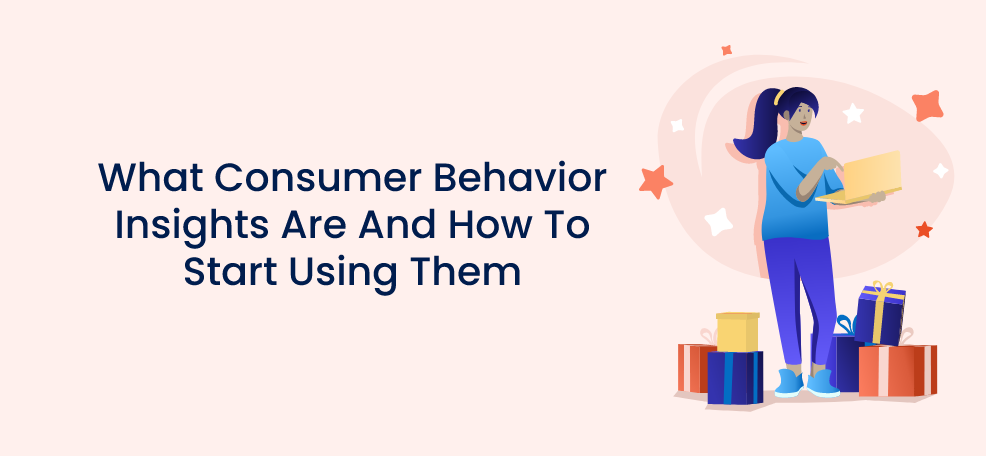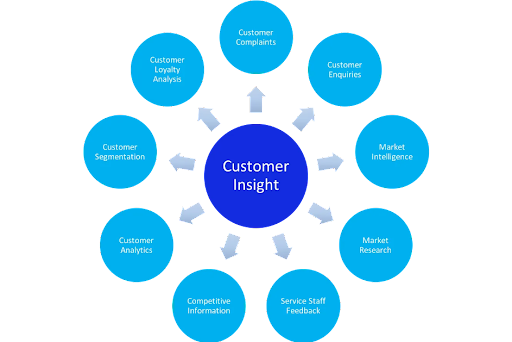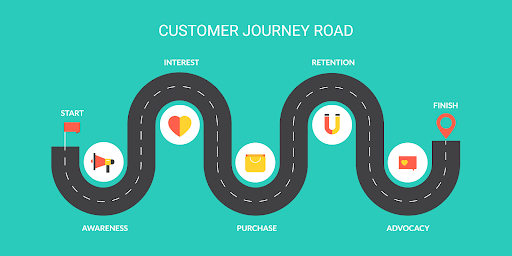Having a large, loyal consumer base is imperative for a successful business. But how do you create such a consumer base? To generate and maintain customer loyalty, you must know your target audience inside out. And for this, you will need consumer behavior insights that help better understand them to drive more sales.
You can greatly benefit from your research into consumer buying and online behavior habits as a marketer. It gives you a better understanding of what they want, enabling you to gauge their expectations. Also, such an approach is useful to figure out what motivates a customer to make a purchase. Before releasing a product into the market, it is best to evaluate these trends and see whether customers like it using market research techniques.
Marketers may learn about the preferences and dislikes of their target audience and use this information to plan and implement their marketing strategies.
What are consumer insights?
Consumer insights are the actionable lessons gleaned from customer data that help move the needle. For instance, insights will include engagement details on your brand’s marketing materials and other aspects that may impact customers’ purchasing decisions.
You should be able to better grasp consumer behavior in general if you employ these practical insights.
You will gain knowledge of your prospects’ interactions with your marketing channels, sales team, support staff, and product when gaining consumer insights. You can make well-informed decisions regarding the efforts your team should be putting in, as they are armed with this important information.
Consumer insights help you take several steps closer to attaining your company objectives, helping you transform your business into a customer-centric organization. Be someone who understands what customers desire as you put effort into knowing the individuals to whom you’re attempting to sell your products.
The difference between market research and consumer insights
To better understand the market and your customers, you need to blend market research with consumer insights research. They work in tandem to keep you one step ahead of the competition by providing data-driven insights rather than intuition and guesswork.
Know where your firm sits in the market and what you can do to enhance it with market research and consumer insights research. Market research reduces the reliance on hunches and intuition in decision-making by giving precise and reliable data.
On the other end, consumer behavior insights involve assessing data obtained during market research to forecast how certain company choices will affect your consumers. While market research collects data on whole markets, consumer insights research analyses the data to draw meaningful conclusions and implement strategies to push sales.
The importance of consumer behavior insights
Having access to customer insights helps you learn more about how your consumers feel and think about your goods, services, and business in general. Such qualitative and quantitative data aids in crafting profound consumer empathy at different customer touchpoints.
Here, your knowledge of what customers want becomes far more robust, encompassing why they need a certain product or service in the first place.
Moreover, regardless of where these signals come from, listening to your customers helps provide ever-improving experiences that can withstand the test of time. No matter the market environment, once you know the intent of your consumers, you will never have to take a shot in the dark when you practice gathering and evaluating client data at regular intervals.
Helps improve the customer journey
A customer journey can be smooth or full of bottlenecks. Concept maps can be useful to visualize/represent customer journey. Right from them knowing about your business to buying your product and even getting the after-sales service, their journey defines your brand’s customer experience (CX). When you have consumer insights, you can map the customer behavior, discover gaps, identify what works best, and improve CX.
For instance, you may be selling home goods online and find it difficult to provide relevant search results for the text that users search. In that case, you can improve CX by enabling users to take pictures of items they see (similar to Google Lens) and like, giving them the ability to search for products.
You can better understand users’ tastes and preferences, which also help gauge the latest trends and gain insight into what your customers are looking for.
Helps personalize marketing
You can better meet consumers’ needs, desires, and expectations if you know them well with the data in hand. According to a report by Microsoft, businesses that use customer behavior data to produce insights that have a positive impact on sales growth by 85% and can outperform competitors.
Gaining a better knowledge of why consumers purchase specific items and the reasons behind their choices can help you reach and retain customers via targeted marketing and communication.
Customers are more likely to be drawn in and remain loyal when their interests are specifically targeted and personalized. Leverage consumer insights to personalize marketing and offer the message that best motivates customer buying decisions.
Following such an approach will help you fine-tune your communication and figure out how to effectively reach different sets of audiences.
Getting started with using consumer behavior insights
Certain objectives should drive your exercises of conducting consumer insights. Start with identifying the sources, methods, and availability of high-quality data which plays a crucial role in any data analysis.
When starting with consumer behavior insights, ensure you have a process in place regarding how and where you use the data. Here are a few quick tips to get started effectively in the right direction.
Collect the right data
You and your marketing team rely heavily on high-quality data. When you employ bad data, marketing resources will be depleted, reducing the effectiveness of the marketing campaign.
Identify which metrics matter the most — traffic, conversion rate, churn rate, etc. And then track what causes customers to turn away. The growing devices and channels may lead to a lot of diverse data and various customer records across different databases.
You need to integrate data from multiple sources and choose the right approach to leverage data for better use.
Use customer research
Conduct customer research with different groups if you’re looking for patterns in how consumers of different demographics engage with your product. For instance, running two distinct studies, for 10 men and 10 women, may help you see how different genders see your product.
Using this method, it becomes simple to compare the outcomes of the two groups. Likewise, conduct research to have participants from multiple demographics (city, age group, gender, etc.), which help you understand what they feel about your brand. This includes:
- Which competitors do they prefer?
- What qualities are important to them?
- When do they make their purchase decision?
You can get better insights into your customers’ motives by grouping different personas and demographics with similar qualities like age and gender to their interests, views, lifestyles, and attitudes.
Also, try searching audiences similar to your current ones that help expand your reach or guide you in the direction of influencers, platforms, and marketing content directed to the targeted group.
Track competitors
One way to get consumer behavior insights is to analyze your competition. Know if competitors launch any new product in the market. This will give you a better understanding of how customers engage with competitors, mend your messaging, and identify how better you can offer your product than competitors.

Prospective consumers can teach you a lot, even if they aren’t your consumers yet. Start analyzing negative feedback from people who have purchased from your competitors. This will help identify areas of your product that need improvement. You may learn about your customers’ pain areas by reading negative reviews from your competition.
Analyze your rivals’ content marketing methods. Sign up for your rivals’ email lists, read their content, or follow them on social media. Knowing what content your competition puts out to attract your target audience can offer you an advantage over them.
You may think of competitor analysis as giving out a cheat sheet for an effective plan. Identify the sorts of material your rivals are posting — analyze what works for them and what doesn’t. And this way, you can try creating better content and thereby leverage the displeasure the audience faces while interacting with the rivals’ content.
Ad campaigns are a great source of insights as well. If long-term PPC advertising weren’t lucrative, your rivals wouldn’t be continuously investing money in it. You can be certain that if a business is investing money on focused keywords to target a particular audience segment, their approach is working.
But the question remains, how can you tell which ads your competitors are running or which keywords they’re paying for? The good news is that there are tools that make PPC competitor research easy and let you see the keywords that are driving the most traffic their way from Google paid search results.
You can also run Google search queries and see for yourself the ad placements to know if your competitors are bidding on the same keywords you want to rank for.
Analyze website usage
Businesses are now adopting a smarter approach to leverage more customer data than ever before.
Customers make repeat purchases, and often their sources of channels are different. For instance, they may land on your site from an Instagram ad to make the first purchase and may then come from a direct search, leaving a digital footprint wherever they go.

You have a lot of information to keep track of. Even seasoned marketing professionals may find it difficult to go through all the data if they don’t have the necessary consumer insight tools.
With the right tools, you can have the necessary consumer insights that help you interpret and analyze data.
Small businesses can use analytics to boost marketing efforts, which involves using tools like Google Analytics, heat mapping tools like Hotjar, and screen recording software like Lucky Orange. These tools show how your website visitors engage with your on-site content and offerings.
Lead generation software Poptin also uses analytics to track pop up performance and somehow give users a glimpse of their consumer behavior. It also uses triggers and targeting rules to track customer behavior to better target them.
Wrapping up
There is one thing all businesses have in common — the need to focus on customers’ needs. Complete awareness of the customer’s needs and wants is vital to meet their expectations. Empowering your team to collect customer behavior data becomes crucial to unlocking success in the longer run.
To conclude, getting insight into customers’ motivations and behaviors is critical to optimizing customer journeys. Use the tips outlined above to get started using consumer insights for your business growth.






